The choice now belongs to the American voter. Both President Barack Obama and Mitt Romney have extensive ground operations to get their core supporters to show up on voting day and scoop up any undecided voters along the way. The American electorate is a diverse collection of voting blocs that each campaign has been trying to woo for months.
Below we unmask these six key voting groups using the most recent data available to show what each candidate needs to win their vote.



The Independent
There are more political independents in 2012 than at any point in the last 75 years with 38 per cent of Americans identifying as independents.
Who are they?
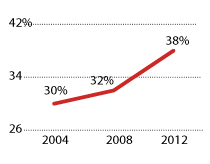
The number of independent voters has grown each election since 2004, from 30 per cent in the 2004 election between President George Bush and Democratic challenger John Kerry, to 32 per cent in Obama's last election in 2008.
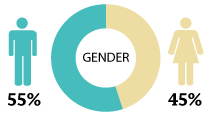
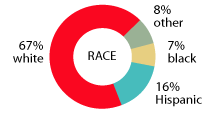
How do they feel?
 |
Concerned about government involvement in health care and the rich getting richer. |
 |
Favour unions to protect workers and greater restrictions on immigration. |
 |
Waning interest in helping needy people if it means the country will be deeper in debt. |
Who will they vote for?
 |
53 per cent have an unfavourable view of Barack Obama. |
 |
63 per cent say the country is going in the wrong direction. |
 |
11 per cent were undecided about who they will vote for. |


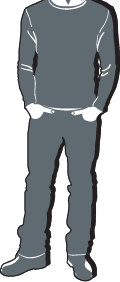
The Millennial
Also known as Gen Y, or CENGAs (College educated, not going anywhere), those born between 1981 and 1994 represent about 18 per cent of the voting-age population.
Who are they?
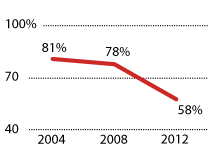
Who will 'definitely' vote?
The number of registered voters under 30 who say they will 'definitely' vote has decreased as a percentage over the past three elections, from 81 per cent in 2004 to less than 60 per cent this election.
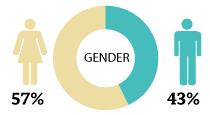
More than half of all millennial voters are women. Overall, women also account for 63 per cent of all undecided voters.

13.2 per cent of those age 20-24 are unemployed according to seasonally adjusted calculations. About four million are out of work.
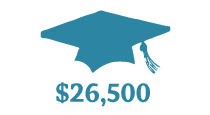
The average student loan debt for 2011 college graduates is $26,500 (U.S.), a figure rising by five per cent each year.
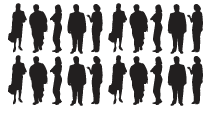
More than 40 per cent are Hispanic or non-white, making this the most diverse generation.
How do they feel?
 | Hold liberal attitudes on most social and government issues. |
 |
Has growing unease about the direction of the country in recent years. |
 |
Faltering allegiance to the Democratic party, which may move further toward the GOP. |
Who will they vote for?
 |
10 per cent were undecided about who they will vote for. |


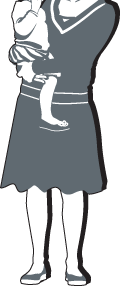
The Mom
The gender gap has played in the Democrats' favour for the past four presidential elections with 56 per cent of women voting for Obama in 2008 compared to 49 per cent of men when 9.7 million more women than men voted. However, independent, working-class women without degrees, often referred to as "waitress moms," have been called a "volatile" force in the 2012 election.
Who are they?
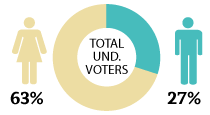
63 per cent of all undecided voters are women, while just 27 per cent are men.

41 per cent of employed women are undecided voters, making them a significant group.
How do they feel?
 |
Feels economically challenged. |
 |
Wants government to do more to solve problems and help people. |
 |
Concerned with their own financial crisis more than the national. |
 |
Has concerns about both parties' leaders. |
Who will they vote for?
 |
79 per cent favour Obama over Romney. |
 |
52 per cent of white female non-college graduates say they will vote Romney. |



The Hispanic
The term Hispanic refers to a person of Cuban, Mexican, Puerto Rican, South or Central American, or other Spanish culture or origin regardless of race. They are the largest minority group in the United States.
Who are they?
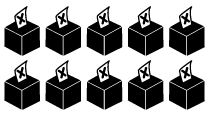
23.7 million Hispanics are eligible to vote in 2012, representing 11 per cent of the electorate, a growth of four million since 2008.

10 per cent of all Hispanics are unemployed, higher than the rest of the national average of 7.85 per cent.
How do they feel?
 | Education, jobs, and the economy are the top ranked issues. About 60 per cent of Hispanic men disapprove of Obama's job on budget and spending. Health care concerns rank higher than the federal budget deficit, immigration or taxes. |
Who will they vote for?

| 67 per cent of the Hispanic vote went to Obama in 2008 |

| 44 per cent of Hispanic voters supported George W. Bush in 2004 |

| Registered Latino voters favour Obama over Romney by 69 per cent to 21 per cent. In nine battleground states, registered Hispanic voters prefer Obama by 65 per cent, with 23 per cent supporting Romney. |



The Blue-collar Midwesterner
White non-college-educated voters favoured Republican John McCain in 2008, but Democrats have argued that Obama gained their support after the 2009 auto industry bailout.
Who are they?
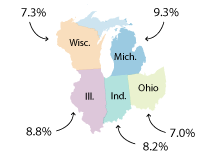
Unemployment in the Midwest states is at 8.12 per cent (using September figures), higher than the rest of national average of 7.85 per cent (using October figures). (State figures are from September jobs data.)
How do they feel?

| Economy is the biggest issue for white middle and working class who voted for Obama in 2008 but feel powerless with the situation and direction of the country. |
Who will they vote for?

| According to a recent poll, Midwest voters say they favour Romney over Obama 51 per cent to 43 per cent, with 5 per cent undecided. |

| In 2008 Midwest states voted 54 per cent for Obama, but only 47 per cent of whites in the Midwest voted for Obama. |
SOURCES: PEW RESEARCH CENTER, TARRANCE/LRP, GALLUP, BUREAU OF LABOR STATISTICS, THE INSTITUTE FOR COLLEGE ACCESS & SUCCESS, NATIONAL JOURNAL, CENTER FOR AMERICAN WOMEN AND POLITICS, PEW HISPANIC CENTRE, THE NEW YORK TIMES, CABLE NATION
GRAPHICS BY: MURAT YUKSELIR, MATTHEW BAMBACH
INTERACTIVE BY: STUART A. THOMPSON
GRAPHICS BY: MURAT YUKSELIR, MATTHEW BAMBACH
INTERACTIVE BY: STUART A. THOMPSON